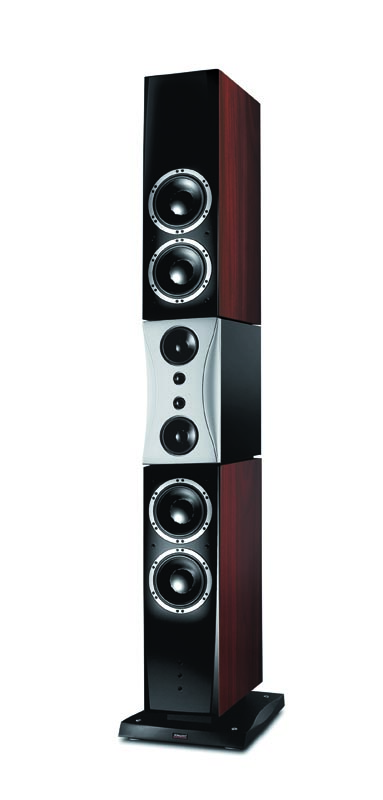It's fact that too short or shallow window function damages magnitude response by smoothing narrow band deviations (NBD) at the midrange, but too steep window functions could cause deviations and hump.
Errors can be minimized by merging near field LF and far field HF above frequency range including "too much" error. Challenge is that large radiating area requires adequate measurement distance to be proper far field without near field effects. Longer measurement distance requires longer distance to reflecting boundaries.
Measuring outdoors speaker above 2 meters could allow measuring also large constructions at >1 meter with close to 10 ms time window which passes also NBD at mid-range. But really large and complete (with XO) tower constructions with large woofers or long distance between different drivers require "full" measurement distance of 2 meters. People living in continuous winter or rainy or windy climate are forced to measure indoors. Height of the room is not necessarily more than 2.5 meters so measurement distance must be quite short (<4.5 ms) and time window cannot be very steep especially with larger woofers to avoid merging at the error hump causing wrong LF/HF balance to the result response. In critical cases shallower window function such as Tukey 0.50, Tukey 0.75 or Cosine could be better compromise though NBD could be quite much smoothed. So
@napilopez you cannot recommend single steep window function type without specifying also few other parameters such as maximum radiator size and reflection-free time in IR. You can recommend outdoor measurements for sure, but there may be close to no one who can really use it.
I have tested some mathematical tricks to extend time-windowed measurements to lower frequencies. For example "Extending Quasi-Anechoic Electroacoustic Measurements to Low Frequencies" by Eric Benjamin introduces few possible methods. Some other papers in AES e-Lib related to cepstrum:
Maybe JohnPM could try to add some good method to REW, without too many subjective parameters to get decent result.
As already mentioned, measuring complete speaker including XO is big part of the problem due to distance differences between the radiators. Quasi-anechoic measurement is usually suitable for small speakers only. Measuring individual drivers enables shorter measurement distance and longer or steeper time windows (compared to full construction), but unfortunately disconnecting individual drivers is not always accepted, or multiple woofers could have shared box volume reducing accuracy of measurements. Combining responses of multi-way requires also time-locked measurements so Umik-1 etc. is not the best option.
Designing good speakers is much more important goal (imo) than reviewing and judging them after a mistake has already happened. Measurement instructions for VituixCAD introduces method to measure individual drivers because the tool is meant for designers - to make commercial reviewing of very basic frequency response features as unnecessary as possible.



 www.audiosciencereview.com
www.audiosciencereview.com

 www.audiosciencereview.com
www.audiosciencereview.com

